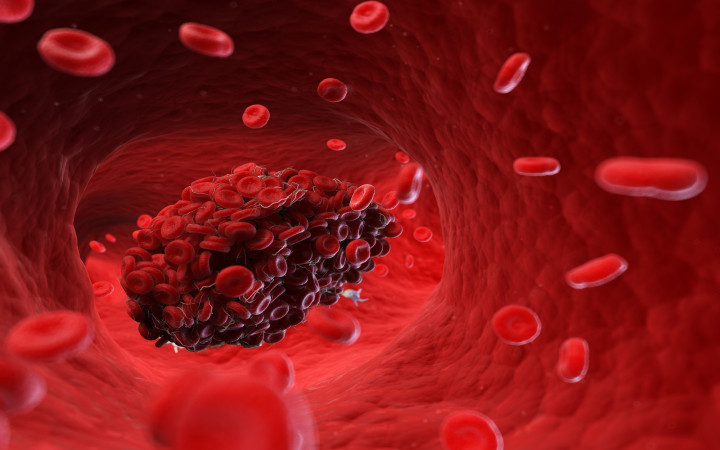Today’s Wonder of the Day was inspired by Charlie. Charlie Wonders, “What is a blood clot” Thanks for WONDERing with us, Charlie!
Picture it: You’re playing outside with a group of friends. It’s time for hide-and-seek, and you run to find the best hiding spot. That’s when you trip over a crack in the sidewalk. You fall down, hard. Immediately, you feel a searing pain in your knee. Looking down, you see blood on the concrete.
For most kids, a scraped knee is no big deal. You might run home to have a family member clean and bandage your wound. It’ll stop bleeding in no time, thanks to your body’s natural functions.
When you’re injured, platelets and clotting factors rush to the location of your wound. They help form a blood clot, which is a semisolid clump of blood cells. This will stop the bleeding. Later, that blood clot may turn into a scab.
In cases of cuts and scrapes, blood clots are an important part of healing. They can help people from bleeding too much after an injury. However, blood clots sometimes form inside the body, too. A clot in a vein or artery can become dangerous.
Often, these blood clots dissolve on their own. But if they don’t, they might move through the veins to other parts of the body. If they reach the heart, lungs, or brain, blood clots might cause serious problems. This can include heart attacks, pulmonary embolisms, and strokes.
How can a person tell if they have a blood clot? Most often, they form in the arms or legs. People may notice swelling, skin redness, pain, or warm spots in these areas. It’s always important to see a doctor if you think you have a blood clot. If it doesn’t dissolve on its own, they may prescribe medicine to treat it.
If a blood clot moves to a dangerous location in the body, the person might become dizzy or have chest pain. They could also have a fast heartbeat, cough, or fever. Very serious symptoms include difficulty breathing, seeing, or speaking. They should seek immediate medical attention.
What causes blood clots? Many factors can contribute. They can be caused by some genetic conditions and medicines. Diabetes, obesity, and smoking can also make a person more at-risk. Additionally, staying in one position for a long time can result in a blood clot. People are also at an increased risk if they are pregnant or have cancer.
If a person is at risk for blood clots, their doctor might suggest medicine or certain exercises to help them stay healthy. It can also help to eat less salt and wear loose-fitting clothing. People can also help lower their risk by changing positions often on long trips and by avoiding sitting or standing for more than an hour.
Of course, not everyone’s blood clots on its own. People with hemophilia may bleed longer after an injury because their bodies don’t make enough clotting factors. This condition is often passed down through families. Today, doctors have many ways to treat it.
Have you ever had a scratch or scrape? Most people have! If so, you know how important blood clotting is. However, blood clots that travel inside the veins can be dangerous. Be on the lookout for the symptoms in yourself and others. You may just save a life!
Standards: NGSS.LS1.A, CCRA.L.3, CCRA.L.6, CCRA.R.1, CCRA.R.2, CCRA.R.4, CCRA.R.10, CCRA.SL.1, CCRA.W.2, CCRA.W.7, CCRA.W.9, CCRA.L.1, CCRA.L.2




